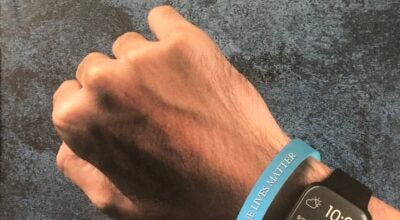A bird’s eye view: Birds benefit mankind
Published 3:06 pm Saturday, January 5, 2019
Besides hearing their melodious songs and enjoying their beautiful colors, birds have benefited mankind for a very long time. Let’s consider some of them.
The first thing I think of when considering man’s use of birds is as a food source. Whether it’s scrambled eggs, the hormone-filled chicken we consume at an insatiable rate or those mouth-watering Thanksgiving turkeys, our demand for poultry is huge. According to The National Chicken Council, per capita annual poultry consumption in the United States was an estimated whopping 109 pounds in 2018! Over 3,400 years ago God fed Moses, Aaron and the Children of Israel quail in order to satisfy their grumblings for carnivorous demands. Because of this miracle, Baptist preachers can’t seem to get their fill of fried chicken.
Molted flight feathers served as writing instruments long before Bic pens were ever thought of. Goose down feathers still, to this day, keep us warm in our L.L. Bean and Nordstrom jackets. Feathers also filled many a pillow and mattress for a comfortable night’s sleep before Tempur-Pedic bedding existed. But who can afford one?
Birds have even helped save lives. Long before Al Gore invented the internet, before cell phones and Facebook, two-way communications were primarily via telephones and radio. During World War I homing pigeons were used to deliver messages through enemy lines. Also known as carrier pigeons, these birds were trained to carry small, lightweight messages tied around their leg or back. And even further back than that, the Greeks used pigeons to deliver the names of victorious winners of Olympic Games throughout the country. During special events like weddings and funerals, pigeons are released with great fanfare among the amazed attendees only to find their way back to their home loft and food.
In Japan, China and Korea cormorants were used in the fishing industry. A restriction was tied around the base of the cormorant’s neck by the fisherman. The cormorant was released to dive and could actually swallow smaller fish it caught. But larger fish couldn’t be swallowed and the fisherman could dislodge the fish from the cormorant’s throat. Although this practice once flourished, it is now mainly used in the tourism industry.
Just think what birds have meant to pests over the years. We know they devour many insects and vermin. Not too long ago I read an interesting article about a California citrus grower that had an issue with rodents in his orchards. A few nest boxes were built to Barn Owl specifications and mounted throughout and near his orchards. After Barn Owls occupied the nest boxes the rats and mice began to disappear. There is no better rodent control than the lethal and worldwide Barn Owl. Their ability to locate prey in total darkness and their silent flight is legendary.
Which reminds me of a trivia question. What’s the last thing to go through a rat’s mind before it is caught by a Barn Owl? The answer: a talon!
In 1848, the Mormon pioneers that settled in what is now known as Salt Lake City, Utah, were plagued with a species of katydids that devoured their crops. Suddenly, as if by a miracle, gulls appeared and began gorging themselves on the insects, thus ensuring that some 4,000 pioneers survived. Because of this incident, the California Gull is the state bird of Utah, and a seagull monument has been built at the Salt Lake Assembly Hall on Temple Square.
Birds’ feathers were used to fletch hunting arrows and as ceremonial head dress. Birds have been kept as pets worldwide and some civilizations worshiped them. Falconers use birds of prey to hunt with and hunters spend millions in the U.S. alone on migratory bird hunting.
In Book 2, Chapter 10 of The Antiquities of the Jews, Flavius Josephus recounts the story of how Moses was successful in warring against the Ethiopians by the use of a special bird — the ibis.
“… but Moses prevented the enemies, and took and led his army before those enemies were apprised of his attacking them; for he did not march by the river, but by land, where he gave a wonderful demonstration of his sagacity; for when the ground was difficult to be passed over, because of the multitude of serpents (which it produces in vast numbers, and indeed is singular in some of those productions, which other countries do not breed, and yet such as are worse than others in power and mischief, and an unusual fierceness of sight, some of which ascend out of the ground unseen, and also fly in the air, and do come upon men at unawares, and do them mischief). Moses invented a wonderful stratagem to preserve the army safe and without hurt; for he made baskets like unto arks of sedge, and filled them with ibises, and carried them along with them; which animal is the greatest enemy to serpents imaginable, for they fly from them when they come near them; and as they fly they are caught and devoured by them, as if it were done by the stags; but the ibises are tame creatures, and only enemies to the serpentine kind …”
Perhaps you can think of other uses of birds I haven’t covered.
Phil Hardy, a bird watcher and bird photographer, lives in Americus.



